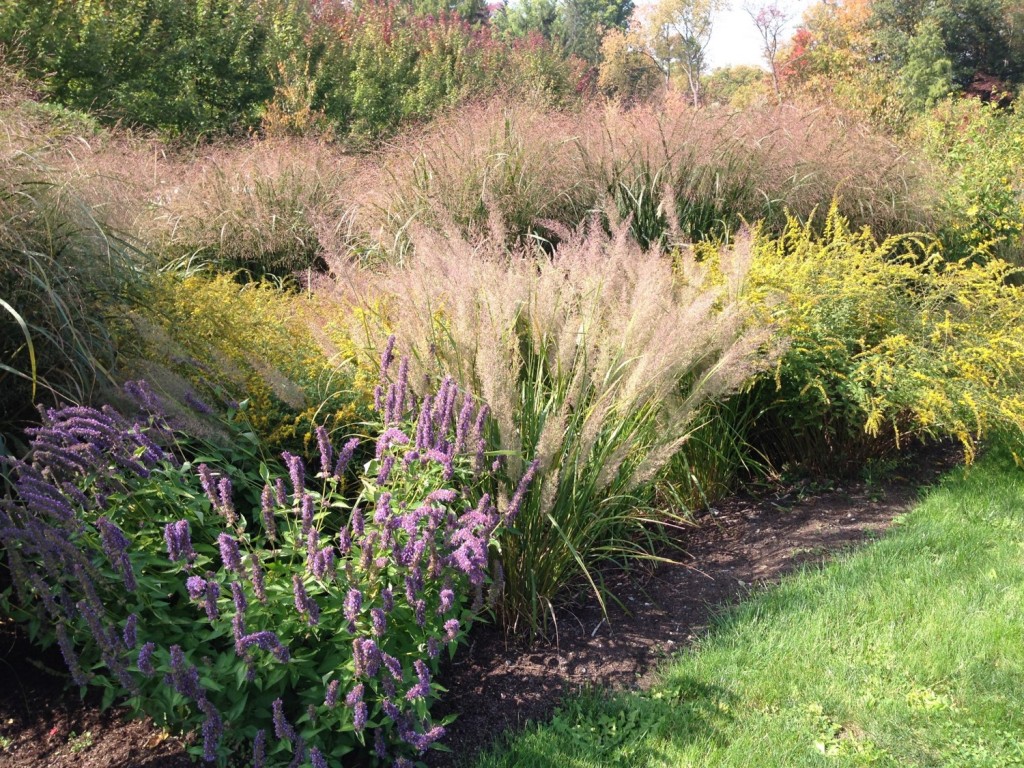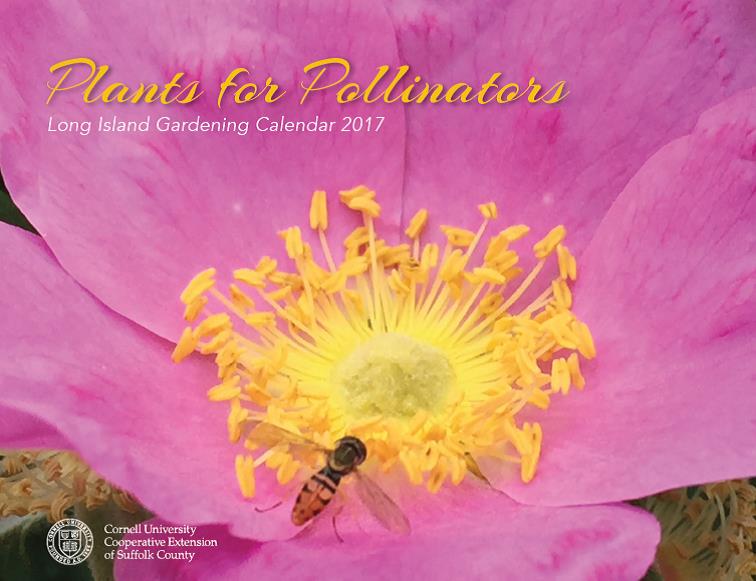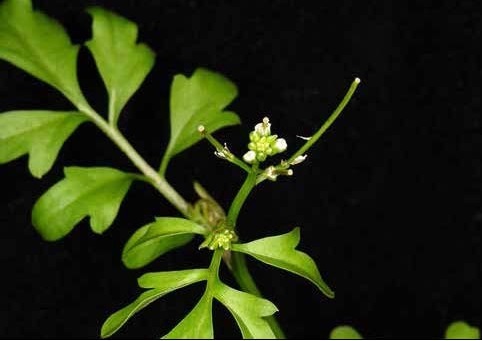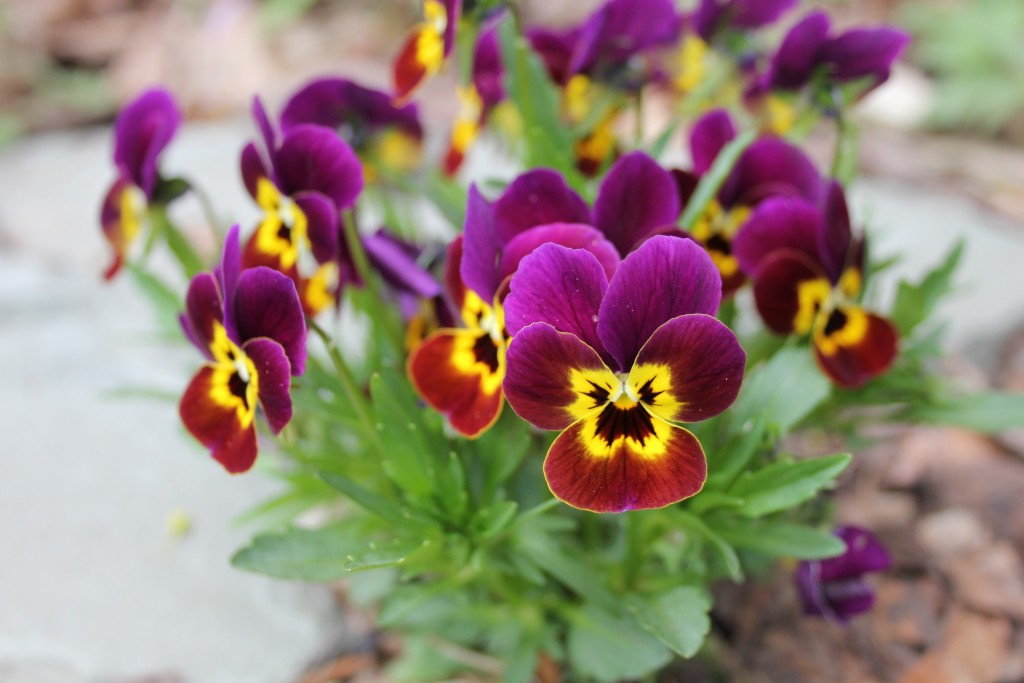Do you want a garden that’s easy to install, looks good year-round, requires little maintenance, and helps prevent water pollution? Rain gardens are shallow depressions designed to soak up water and support trees, shrubs, and flowers that tolerate both wet and dry conditions. Often located near gutter downspouts or places where water puddles, rain gardens can also be landscaped into gentle slopes or run curbside along streets.

Giant hyssops, switchgrass, and goldenrod grow in this rain garden at Cornell Plantations in Ithaca, planted next to a parking lot to absorb and clean storm-water runoff. Photo © Robin Simmen.
By absorbing the rain falling on your land, a rain garden can help reduce the storm-water runoff that pollutes our beaches, harbors, and estuaries. People sometimes confuse rain and water gardens. A rain garden is not a pond and won’t breed mosquitoes, which require 10 to 14 days in standing water to develop from eggs into adults.
The next time it rains, observe the direction of water runoff and where it collects on your property. Your roof may be directing most of the rain falling on it into gutters and downspouts feeding into a storm drain; if so, consider diverting this lost rainwater to irrigate a rain garden via underground piping, or construct a surface swale to channel this water to the garden. If your land slopes gently, you can create shallow terraces (one foot deep or less) for your rain garden or dig out a scallop-shaped bed for it in the hill.
The best plants for rain gardens are happy with a “drought and drench” lifestyle. Native plants are highly recommended because they are uniquely adapted to local weather fluctuations. Also, they require little or no fertilizer, are excellent food sources for pollinators, and provide habitat for birds, insects, and butterflies. Once established, their deep roots increase the water-holding capacity of the soil, hold it together, and prevent erosion. Water a rain garden as needed for the first year or so after planting. By the third year, you’ll never need to water it again!
For information on how to evaluate and amend your soil for a rain garden, do a percolation test to see how quickly water is absorbed, decide the dimensions of a rain garden, and prepare and plant the site, read the CCE Suffolk fact sheet on Creating a Rain Garden, and its companion Native Plants for Long Island Rain Gardens.
Robin Simmen is a former Community Horticulture Specialist for CCE Suffolk. She can be reached at rlsimmen@gmail.com.





